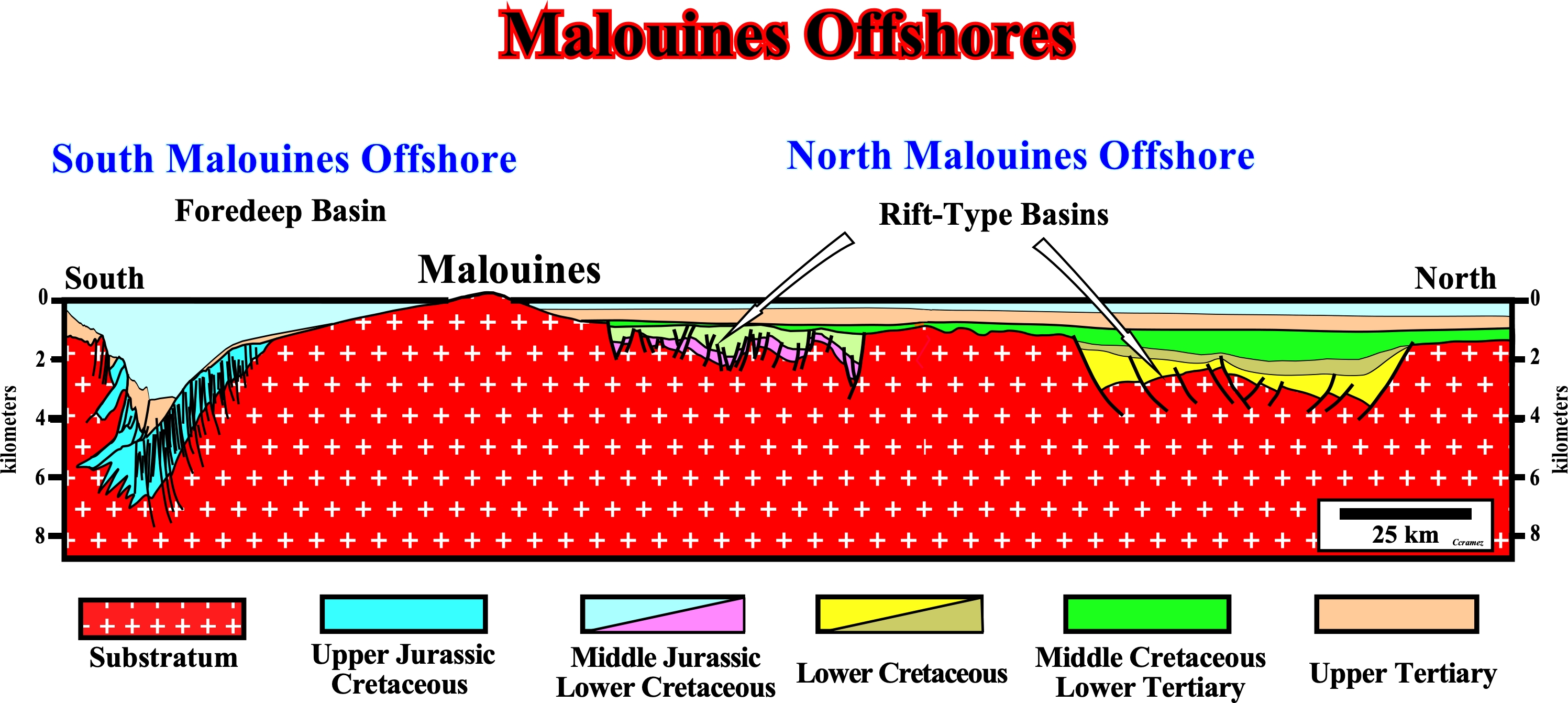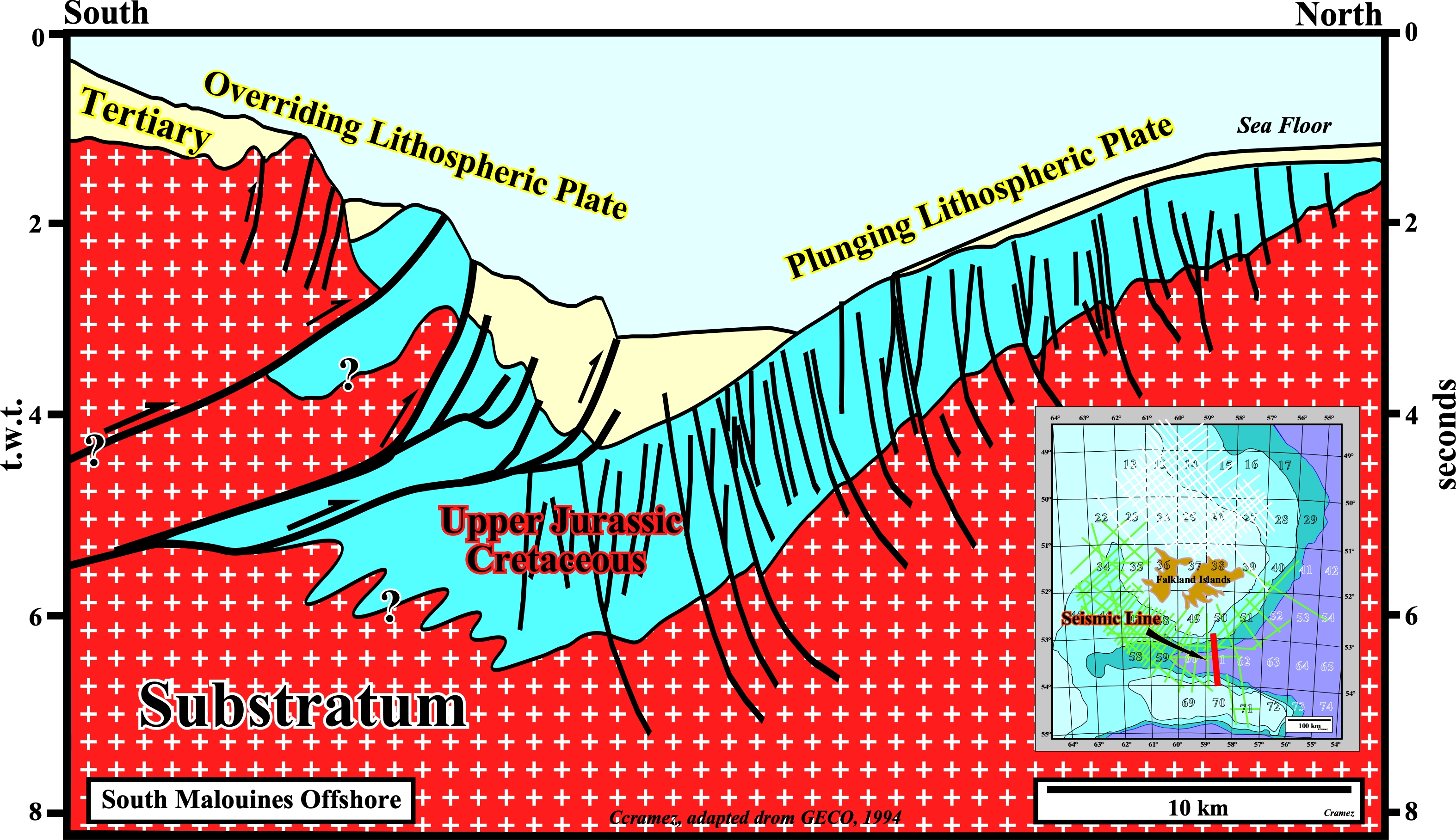

Argentina Offshore
South Malouines Offshore

The major sedimentary basins of the Malouines (Falkland Islands) offshores, which are limited between the Agulhas-Malouines fracture zone and the A-subduction zone (Ampferer subduction) bounding the Burdwood High are illustrated on this South-North schematic geological cross-section. Roughly speaking, it can be said, Mesozoic rift-type basins, developed during the lengthening of the Gondwana continental crust, i.e., before the breakup of the lithosphere, are preponderant in North Malouines offshore, while a Tertiary foredeep basin, associated with the A-subduction zone bordering the northern northern flank of the Burdwood High, is the preponderating depocenter in south Malouines offshore as illustrated below.

This geological cross-section, based on a tentative interpretation of a composite seismic line, shows the rift-type basins of the North Malouines offshore, as well as, the Tertiary foredeep basin of the South Malouines offshore. At the hydrocarbon exploration potential, the rift-type basin seems to be more interesting in spite of the fact that the weak burial of the potential source rocks. The water depth of the foredeep basin and its substratum seem to important to allow economical discoveries. In addition, the tentative geological interpretations of autotraces of the seismic lines of the area appear to corroborate such a negative conjecture, as illustrated below.

On this tentative interpretation, in which the interface between the substratum and the Upper Jurassic / Cretaceous interval is not too accurate, the A-subduction zone bordering the Burdwood structural high is, perfectly, enhanced by the bathymetric anomaly. However, as in all A-subduction zones (when a continental lithospheric plate plunges under another continental plate), the subducting or plunging lithospheric plate can be, partly, consumed. On the other hand, due to the compressional tectonic regime (σ1 horizontal) due to the collision of the plates, the sediments of the overriding lithospheric plate are shortened by folds, thrusts and strike slip faults. The term collision used here is quite abusive because in current language, it translates a change of kinetic energy into potential energy, which is not the case in plate tectonics theory. In plate tectonics, kinetic energy does not play any role. Do not forget there are just to three types of energy: (i) Kinetic energy, i.e.., the ability to do work through the movement ; (ii) Potential energy, i.e., the ability to do work through the position and (iii) Electromagnetic radiation energy, as the one transported from the Sun to Earth and which heats us and aliments photosynthesis. Although, often, we meet terms such as electrical energy, chemical energy, nuclear energy, deformation energy, etc., but such things do not really exist. They are only practical abbreviations for specific combinations of the kinetic energy and potential energy.
Send E-mails to carlos.cramez@bluewin.ch with comments and suggestions to improve this atlas.
Copyright © 2001 CCramez
Last update:
2022